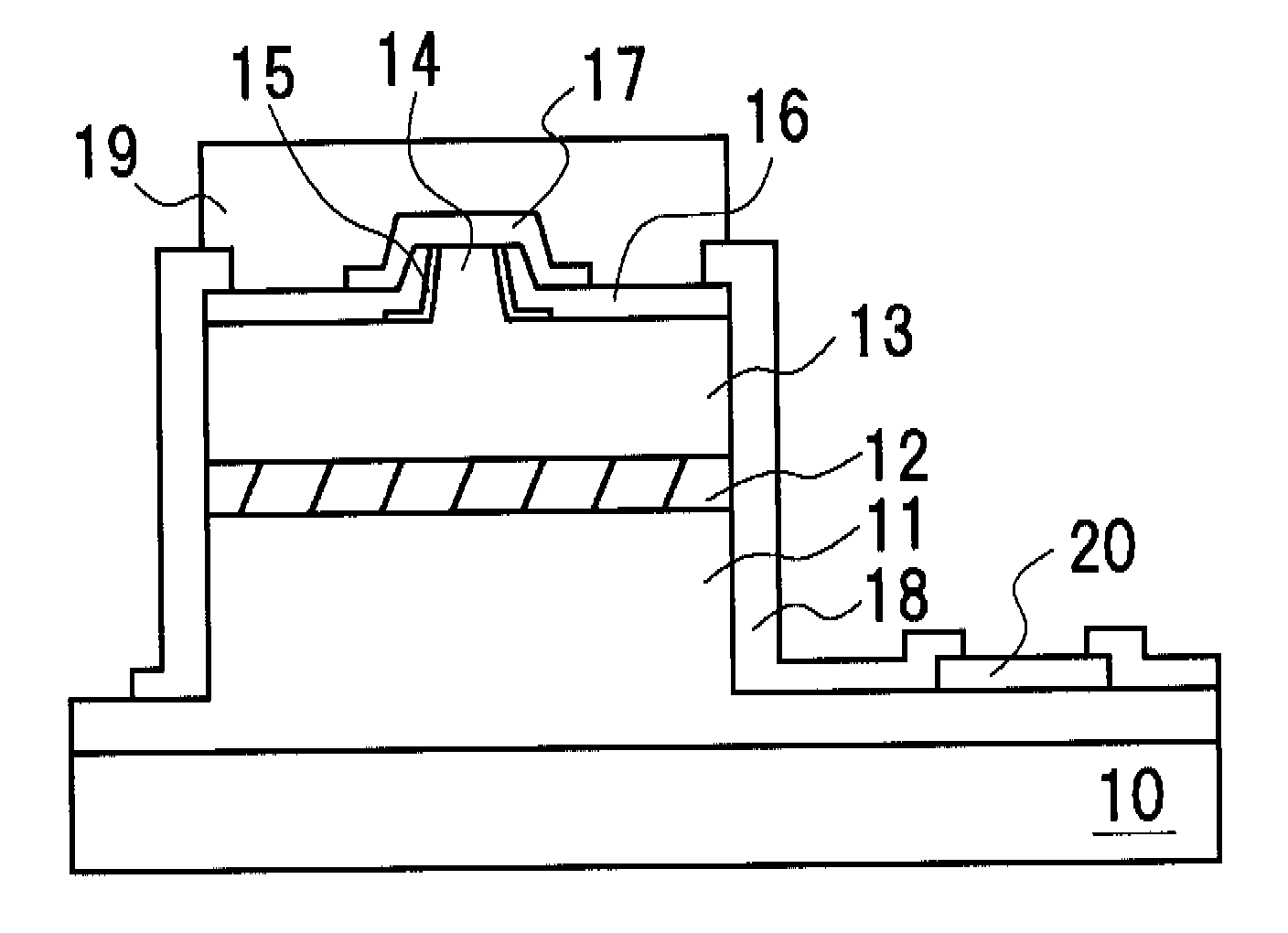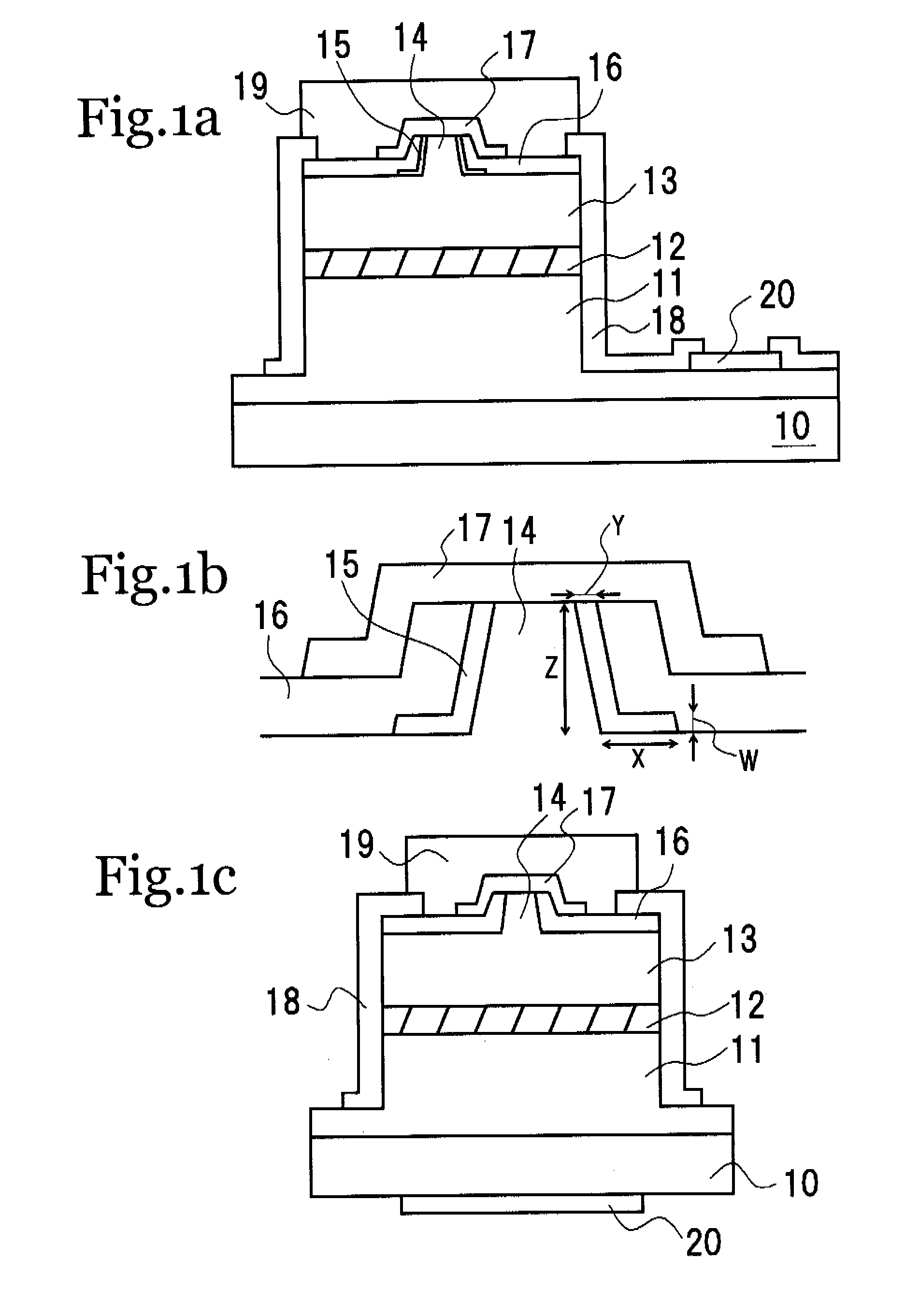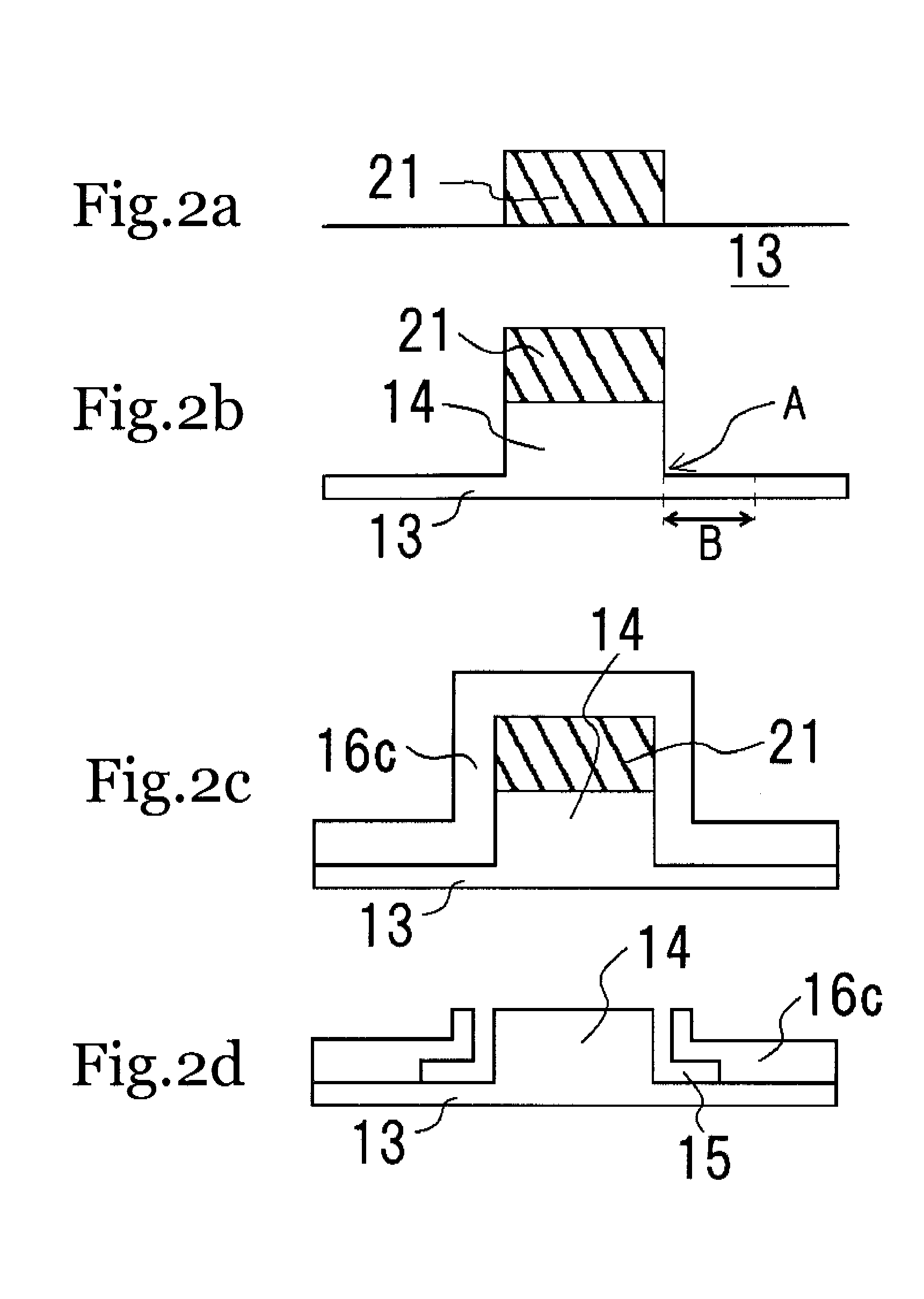Nitride semiconductor laser element and method for manufacturing same
- Summary
- Abstract
- Description
- Claims
- Application Information
AI Technical Summary
Benefits of technology
Problems solved by technology
Method used
Image
Examples
example 1
[0084]The laser element in this example oscillates in a band of 390 nm and under, and as shown in FIGS. 1a and 1b, a first buffer layer (100 nm) composed of silicon-doped Al0.02Ga0.98N and a second buffer layer (150 nm) composed of silicon-doped In0.1Ga0.9N are formed on a substrate 10 composed of n-type GaN. Over this, an n-side cladding layer (0.7 μm) composed of silicon-doped Al0.11Ga0.89N and an n-side light guide layer (0.15 μm) composed of undoped Al0.06Ga0.94N are formed as an n-side semiconductor layer 11, and a barrier layer (7 nm) composed of silicon-doped Al0.15Ga0.85N, a well layer (10 nm) composed of undoped In0.01Ga0.09N, and a barrier layer (5 mm) composed of Al0.15Ga0.85N are formed as an active layer 12 composed of a single quantum well. Over this are formed a p-side cap layer (10 nm) composed of magnesium-doped p-side Al0.30Ga0.70N, a p-side light guide layer (0.15 μm) composed of undoped Al0.06Ga0.94N, a p-side cladding layer composed of a superlattice layer with ...
example 2
[0106]Substantially the same element as in Example 1 is formed in the same way, except that in this example the first protective film has a two-layer structure with ZrO2 of different film quality.
[0107]First, just as in Example 1, a ridge is formed on the nitride semiconductor layer surface using a mask pattern, and as shown in FIG. 3a, a ZrO2 film with a thickness of 10 nm is formed as a lower layer 16a of the first protective film using a magnetron sputtering device. Next, a ZrO2 film with a thickness of 90 nm is formed as an upper layer 16b using an ECR sputtering device.
[0108]The first protective films 16a and 16b thus obtained are annealed at 300° C. and immersed in BHF for 15 minutes, which, as shown in FIG. 3b, dissolved away the mask pattern formed on the p-side contact layer, and the first protective film on the p-side contact layer is removed along with the mask pattern by lift-off method. Further, a cavity is formed in this step by etching the lower layer 16a and upper la...
example 3
[0110]Substantially the same element as in Example 1 is formed in the same way, except that in this example the first protective film has a two-layer structure composed of different materials.
[0111]First, just as in Example 1, a ridge is formed on the nitride semiconductor layer surface using a mask pattern, and an SiO2 film with a thickness of 10 nm is formed as the lower layer of the first protective film using an ECR sputtering device. Next, a ZrO2 film with a thickness of 40 nm is formed as the upper layer using an ECR sputtering device.
[0112]The first protective film thus obtained is annealed at 400° C. and immersed in BHF for 15 minutes, which dissolved away the mask pattern formed on the p-side contact layer, and the first protective film on the p-side contact layer is removed along with the mask pattern by lift-off method. Further, a cavity is formed in this step at the ridge side faces and the ridge bottom face by etching the SiO2 film serving as the lower layer and the ZrO...
PUM
 Login to View More
Login to View More Abstract
Description
Claims
Application Information
 Login to View More
Login to View More - R&D
- Intellectual Property
- Life Sciences
- Materials
- Tech Scout
- Unparalleled Data Quality
- Higher Quality Content
- 60% Fewer Hallucinations
Browse by: Latest US Patents, China's latest patents, Technical Efficacy Thesaurus, Application Domain, Technology Topic, Popular Technical Reports.
© 2025 PatSnap. All rights reserved.Legal|Privacy policy|Modern Slavery Act Transparency Statement|Sitemap|About US| Contact US: help@patsnap.com



